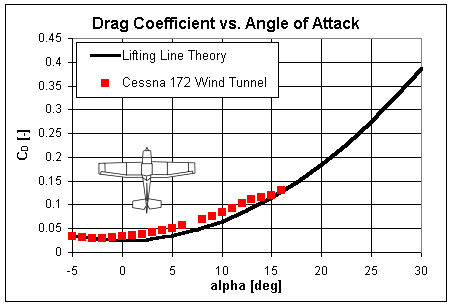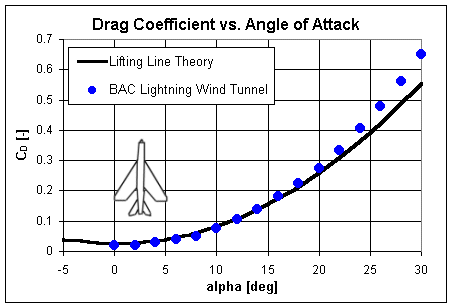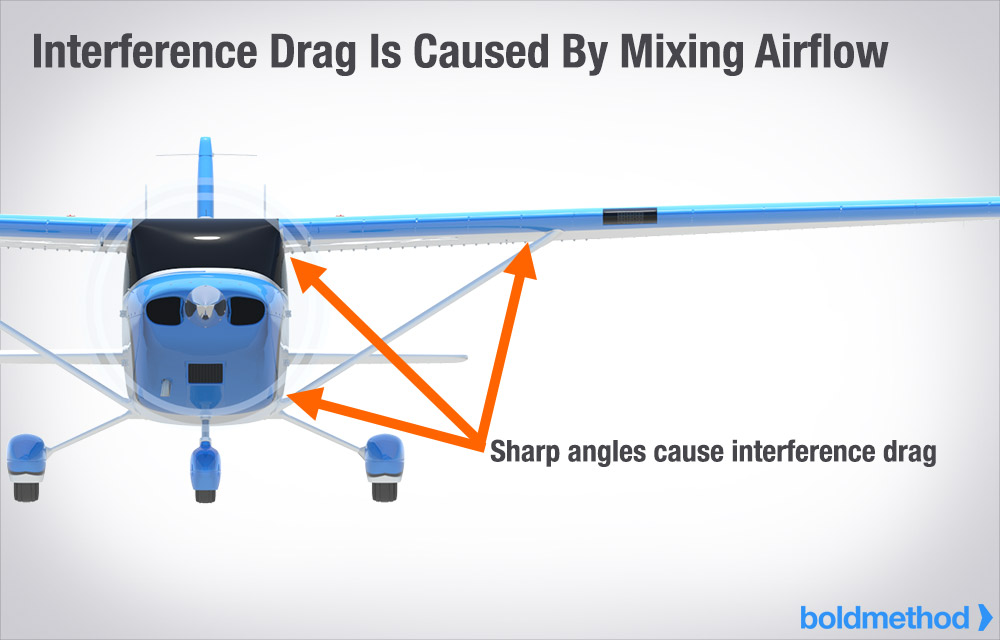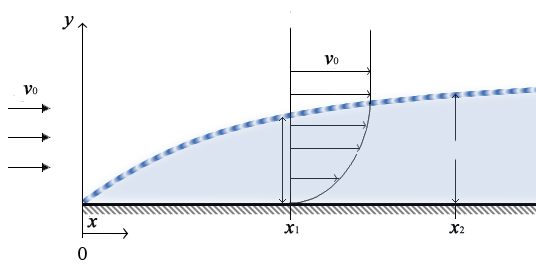22.10.22
Describe typical curves of induced drag, all other drag, and total drag versus IAS in straight and level flight.

Induced drag decreases as speed increases. Parasitic drag increases as speed increases and total drag has a minimum point as can be seen in the diagram.
22.10.20
State the drag formula, and the three basic functions contained within it.
Drag=CD1/2ρV2S
CD Coefficient of drag
1/2ρV2 IAS
S Surface area of the wing
This formula is identical to the lift formula. The only change is CD
22.10.18
State the meaning of the term coefficient of drag (CD); and describe the main features
The drag coefficient (CD) is a non-dimensional parameter, but it takes into
account every aerodynamic configuration aspect of the aircraft including large
components as wing, tail, fuselage, engine, and landing gear; and small elements such as
rivets and antennae.
The drag coefficient of any object comprises the effects of the two basic contributors to fluid dynamic drag: skin friction and form drag. The drag coefficient of a lifting airfoil or hydrofoil also includes the effects of lift-induced drag. The drag coefficient of a complete structure such as an aircraft also includes the effects of interference drag.


22.10.16
Explain the origin of induced drag; and
(a) list the factors affecting it;
(b) explain typical measures for reducing it.
- Associated with the production of lift
- Arises from the downwash induced by the wingtip and trailing edge vortices
- Affected by Aspect ratio and Wing planform shape and
- Coefficient of lift; Angle of attack, Airspeed and Weight
- Reduction measures include washout combined with taper, wing fences and wing tip modifications
Induced drag is caused because the total reaction is tilted further rearwards. This creates a rearward component of total reaction that is induced drag, see the diagram below.
Π= a fixed ratio 3.14
AR= aspect ratio
Aspect ratio The higher the AR the nearer the wing will be to infinitely long. Higher aspect ratio wings produce smaller vortices. The induced downwash angle is smaller and induced drag will be lower.
Wing planform shape For a given wingspan the elliptical planform produces the smallest votaries and therefore the lowest induced drag. Most straight wings produce between 5 and 15% more induced drag than an elliptical wing.
Coefficient of lift For the pilot AR and planform shape are fixed, so the ways the pilot can control induced drag is with angle of attack, airspeed and aircraft weight. These are incorporated in the CL2 factor, which as the above equation shows has a powerful effect on the induced drag generated.
- Angle of attack Induced drag increases as the angle of attack increases. The strength of the vortices are dependant on the pressure difference above the and below the wing. When the wing is at the zero lift angle of attack there are no vortices and therefore no induced drag. Induced drag increases with an increase in angle of attack and will be at maximum at the stalling angle of attack.
- Airspeed Induced drag is inversely proportional to the square of IAS. Induced drag is greatest at low airspeed and lowest at high airspeed.
- Weight Increased weight means an increase in angle of attack to support the weight at any given airspeed. Therefore induced drag is proportional to weight squared (w2)

Washout and taper……
22.10.14
Describe interference drag and the measures for reducing it.
- Component of Parasitic drag
- Interference of converging airflows at the junctions of various surfaces
- Reduced by blending or filleting of surfaces
Interference drag is drag that is generated by the mixing of airflow streamlines between airframe components such as the wing and the fuselage, the engine pylon and the wing.
Interference drag can be reduced by carefully controlling the angles at which surfaces meet each other. It is also controlled by fairings to smooth the flow of air between to opposing surfaces.


22.10.12
Describe the effect of streamlining in reducing form drag.
- Reduces form drag by reducing adverse pressure gradients
- Delays separation, reducing the size of the turbulent wake and pressure differences

Streamlining effectively reduces form drag by smoothing the airflow behind the object.
Fineness ratio…….
22.10.10
Explain form drag and state the factors affecting it.
- Drag caused by the separation of the boundary layer from a surface and the wake created by that separation
- Component of profile drag
- Created by the pressure difference between forward and rearward facing surfaces
- Affected by the shape and size of the object, Angle of Attack, and speed
That part of the drag on an aerofoil which arises from its shape. It varies according to the angle of attack and can be decreased by streamlining.
It is affected by the shape the object presents to the airflow. As can be seen in the diagram below.
Streamlining, Size, Angle of Attack, Speed
Fineness ratio –
Angle of Attack – higher AofA, separation point moves forward and form drag increases,

22.10.8
Explain skin-friction drag and state the factors affecting it.
- Drag caused by the friction of air against the surface of an object moving through it
- Result of shear stress between successive layers of air
Friction Drag, also known as Skin Friction Drag, is drag caused by the friction of a fluid against the surface of an object that is moving through it. It is directly proportional to the area of the surface in contact with the fluid and increases with the square of the velocity. In aerodynamics, the fluid concerned is the atmosphere.
Factors affecting skin friction are
- Speed As speed increases the shear stress across the boundary layer increases. Skin friction increases as the square of the speed.
- Shape Laminar flow boundary layers are sensitive to pressure gradients, which occur when influenced by an area of higher static pressure.The lowest static pressure will be located at approximately the point of maximum airfoil thickness. As the flow continues aft static pressure rises and the airflow is unable to remain linear, so it gradually thickens and becomes turbulent. Laminar flow is also very sensitive to surface irregularities and roughness. If it can be felt under the hand it will affect laminar flow.
- Size For any given size of aerofoil of a given shape if airflow is increased there will be an increase in drag (and lift as it is an aerofoil); the increase in drag is out of proportion to the increase in size. If a shape is doubled the increase in drag and lift is more than doubled under the same conditions. This is called Scale effect and is measured by Reynolds Number. We won’t discuss Reynolds Number as it is a complex subject beyond the scope of these notes.
- Surface area The scale of skin friction drag depends on the wetted area of the aircraft. That is the total surface exposed to the airflow.
- Angle of attack High angles of attack will cause the low pressure peak over the wing to move forward and the transition region will also move forward in sympathy with the changed pressure gradient, creating a greater proportion of the surface subject to a turbulent boundary layer.
22.10.6
Describe:
(a) laminar boundary layer flow;
(b) turbulent boundary layer flow;
(c) transition region.
Laminar layer flow
- Laminar flow boundary layers are very thin (typically 2mm)
- Uniform increase in velocity from zero at the surface to freestream value at outer edge
- Slides smoothly over successive layers
Turbulent layer flow
- Turbulent flow boundary layers are typically 10 X thicker than the laminar flow (20mm)
- Characterized by high frequencies eddies and swirls with considerable intermixing of the flows at successive levels
Transition region
- Region at which the flow changes from laminar to turbulent
The laminar boundary layer flow is the region on the wing where the flow is laminar in nature, each successive layer slides smoothly over the one beneath it, there is a uniform increase in speed from zero to the freestream flow at the outer edge. This layer is typically 2mm in thickness
The turbulent boundary layer flow is the region where after flowing in a laminar way the flow breaks into a turbulent layer. This layer has high-frequency eddies and swirls and there is a lot of intermixing of flows at successive levels. This layer is typically 10 times the thickness of the laminar layer, approximately 20mm
Transition region is the region where the flow turns from laminar to turbulent. This occurs over a short distance.
22.10.4
Explain the term boundary layer.
The boundary layer is a layer of retarded flow which is sandwiched between the local free stream flow and the surface of a body.










